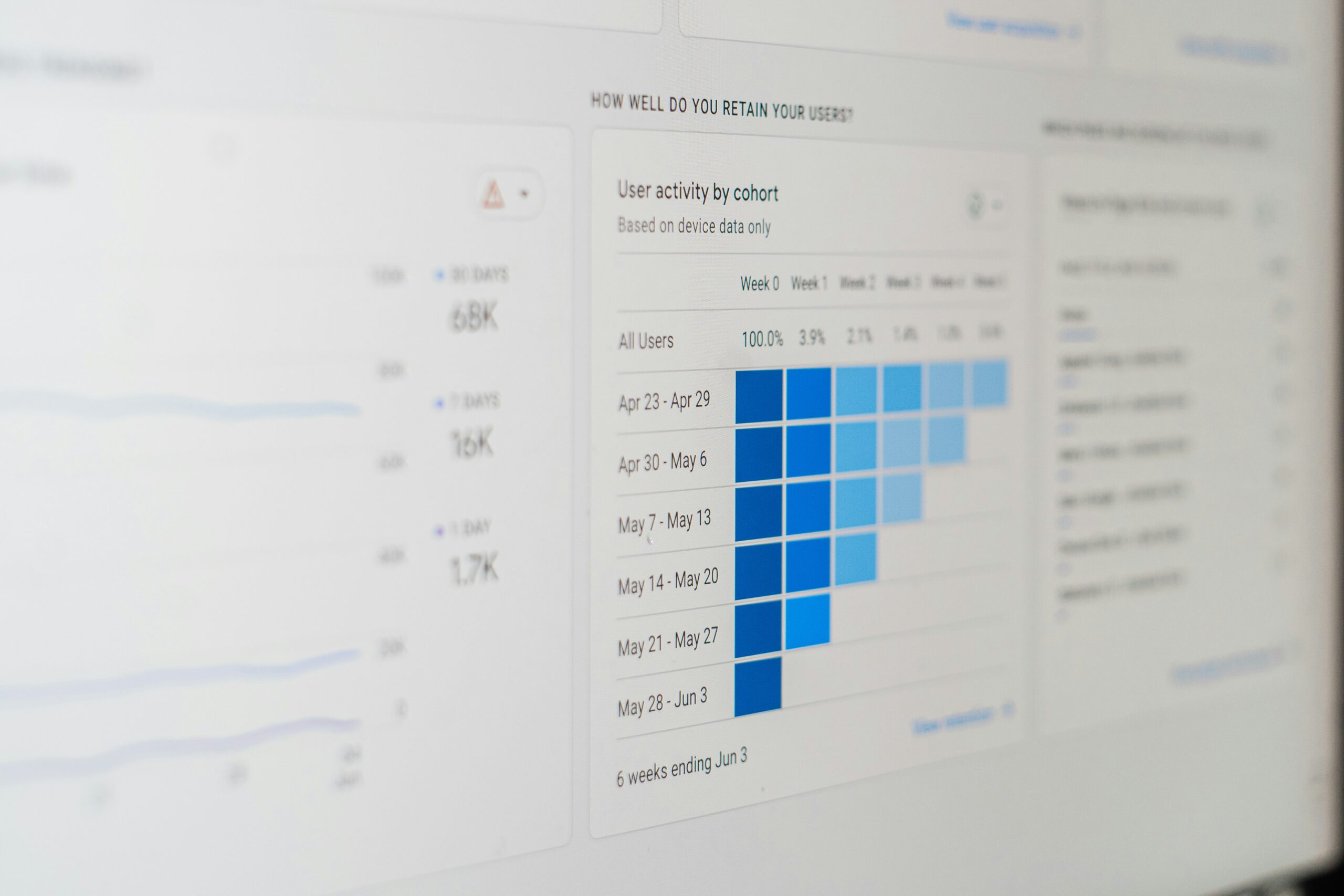Harnessing Advanced Analytics for Predictive Marketing Success
August 27, 2025 | by qqvmedia.com


Understanding Advanced Analytics in Marketing
Advanced analytics represents a significant evolution in the field of data analysis, distinguishing itself from traditional analytics through its sophisticated methodologies and applications. Unlike traditional analytics, which primarily focuses on descriptive statistics and historical data analysis, advanced analytics employs comprehensive techniques that encompass predictive and prescriptive analytics. This multidimensional approach allows marketers to delve deeper into data, extracting valuable insights that influence strategic decision-making.
At its core, advanced analytics harnesses the power of large datasets, often referred to as big data. It facilitates the processing and analysis of immense volumes of data generated from various sources, including social media interactions, customer transactions, and online behavior. Utilizing technologies such as machine learning and artificial intelligence, advanced analytics enables organizations to identify patterns and correlations that would be nearly impossible to recognize through conventional methods. By integrating these cutting-edge technologies, marketers can derive actionable insights that significantly enhance campaign effectiveness.
The significance of advanced analytics in marketing cannot be overstated. Businesses now possess the capability to tailor their strategies based on sophisticated customer segmentation, resulting in personalized marketing campaigns that resonate with specific target audiences. Moreover, the ability to forecast market trends with a high degree of accuracy empowers organizations to stay ahead of the competition. This predictive power is invaluable, allowing companies to allocate resources efficiently and optimize their marketing efforts in real-time according to consumer behavior and preferences.
In a rapidly evolving marketplace, the adoption of advanced analytics is becoming increasingly critical for businesses aiming to achieve sustainable growth and competitive advantage. By leveraging these advanced analytical techniques, companies are positioned to harness their data effectively, ultimately driving predictive marketing success.
The Role of Predictive Analytics in Marketing Campaigns
Predictive analytics plays a pivotal role in the landscape of modern marketing campaigns, enabling marketers to leverage data-driven insights effectively. By employing statistical algorithms and machine learning techniques, companies can forecast customer behaviors and trends, allowing for optimized targeting and personalized messaging. These capabilities significantly enhance the relevance of marketing initiatives, ultimately driving higher engagement and conversion rates.
At the core of predictive analytics are various models that analyze historical data to identify patterns and predict future outcomes. For instance, regression analysis helps marketers understand the relationships between different variables affecting customer behavior. By analyzing how specific changes in marketing strategies, product offerings, or customer engagement methods impact sales, businesses can make informed decisions that improve campaign effectiveness.
Another important technique is clustering, which enables marketers to segment their audience into distinct groups based on shared characteristics. This segmentation empowers marketers to tailor campaigns to specific audience profiles, ensuring that the right message reaches the right consumers at the right time. For example, a retail company can identify a group of customers who prefer eco-friendly products and create targeted promotions to enhance engagement among this audience.
Additionally, decision trees provide a visual representation of data analysis, enabling marketers to identify potential outcomes based on various input factors. This tool simplifies complex decision-making processes by showcasing the potential impacts of different strategies, thereby guiding marketers towards more effective campaign choices.
Numerous companies have reaped the benefits of incorporating predictive analytics into their marketing strategies. For instance, a prominent e-commerce platform utilized predictive modeling to analyze customer purchase history, resulting in personalized recommendations that significantly increased average order value. Such success stories illustrate the transformative potential of predictive analytics in enhancing marketing agility and effectiveness.
Implementing Advanced Analytics for Data-Driven Decisions
To effectively harness advanced analytics within marketing strategies, organizations must start by identifying relevant data sources. This process begins with an inventory of existing data repositories, including customer relationship management (CRM) systems, social media platforms, web analytics, and transactional databases. Each source should be evaluated for its potential to generate actionable marketing insights. The integration of these diverse data streams is critical, as it enables a holistic view of customer behavior and preferences.
Establishing key performance indicators (KPIs) is the next crucial step in this framework. KPIs should be aligned with overarching business objectives, providing measurable outcomes that reflect the success of marketing efforts. Common KPIs in predictive marketing may include customer acquisition costs, return on investment (ROI) for advertising campaigns, engagement rates, and conversion rates. By defining clear KPIs, marketers can ensure that their analytics efforts remain focused and outcome-driven.
Once data sources and KPIs are established, selecting suitable analytics tools becomes paramount. The marketplace offers a plethora of analytics solutions, from user-friendly dashboards to complex predictive modeling software. Organizations should consider factors such as scalability, ease of use, and integration capabilities with existing systems when determining which tools best suit their needs. Additionally, the importance of data quality cannot be overstated; inaccurate or incomplete data can lead to misguided insights and poor decision-making.
Lastly, skilled personnel are essential for interpreting analytics outputs. These experts not only help in analyzing data but also play a key role in deriving actionable insights that can drive marketing strategies forward. Investing in training and development for existing staff, or hiring specialized analytics professionals, can greatly enhance an organization’s capability to leverage advanced analytics effectively, paving the way for improved decision-making and marketing success.
Future Trends in Advanced Analytics for Predictive Marketing
The future landscape of advanced analytics in predictive marketing is poised for significant transformation, driven by various emerging trends. One of the primary catalysts for this evolution is the increasing impact of artificial intelligence (AI) and machine learning (ML). These technologies allow marketers to process vast amounts of data, recognizing patterns and predicting consumer behavior more accurately than traditional methods. By leveraging AI and ML, businesses can create highly personalized marketing strategies that resonate with individual customers, leading to improved engagement and conversion rates.
Another notable trend is the growing importance of real-time analytics. In today’s fast-paced digital environment, the ability to access and analyze data in real time is vital for marketers seeking to make timely decisions. With real-time analytics, brands can instantly gauge the effectiveness of their marketing efforts and adjust strategies accordingly. This agility not only enhances customer satisfaction but also maximizes return on investment by capitalizing on emerging opportunities as they arise.
The integration of big data across various marketing channels is also anticipated to shape the future of predictive marketing. As companies collect data from diverse sources—ranging from social media interactions to website visits—there is a growing need for tools that synthesize these insights holistically. Such integration empowers marketers to develop comprehensive strategies that consider the entire customer journey, enhancing targeting and enabling businesses to deliver the right message at the right moment.
However, these advancements come with challenges. Data privacy concerns are on the rise, as consumers become increasingly aware of how their information is utilized. Marketers must navigate these complexities by adopting ethical considerations and transparency when using customer data. Balancing innovation with responsible data practices will be critical in maintaining consumer trust and driving sustainable growth. Staying ahead of analytics advancements will be key to harnessing their benefits while addressing these emerging challenges effectively.
RELATED POSTS
View all


